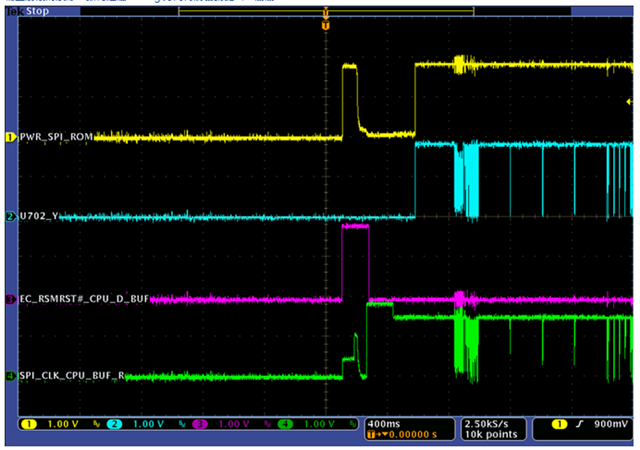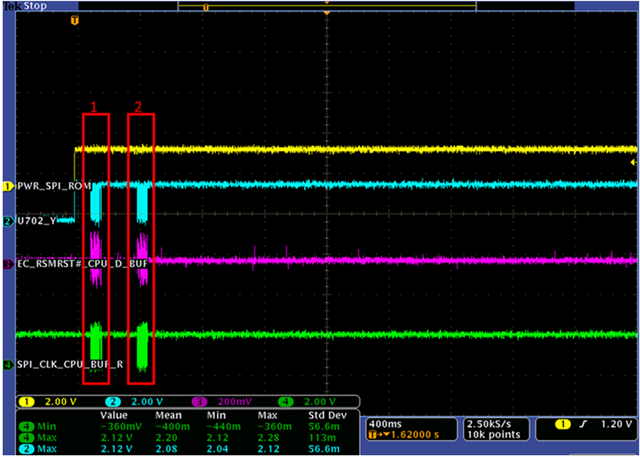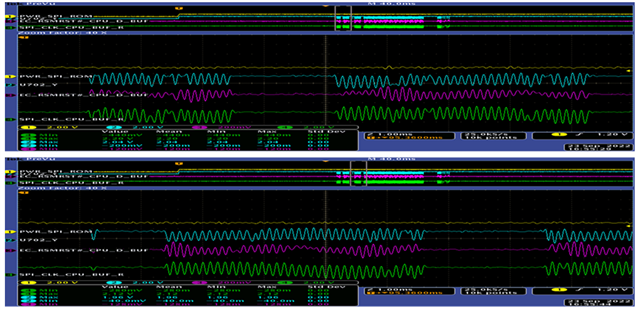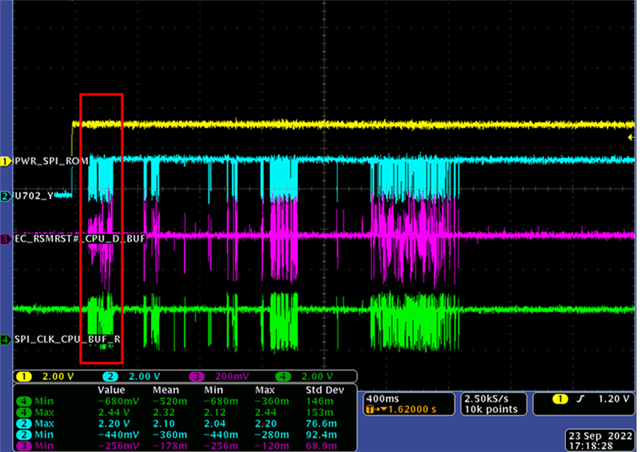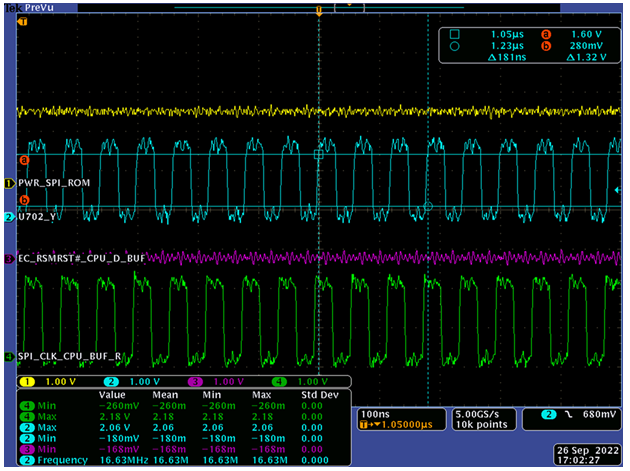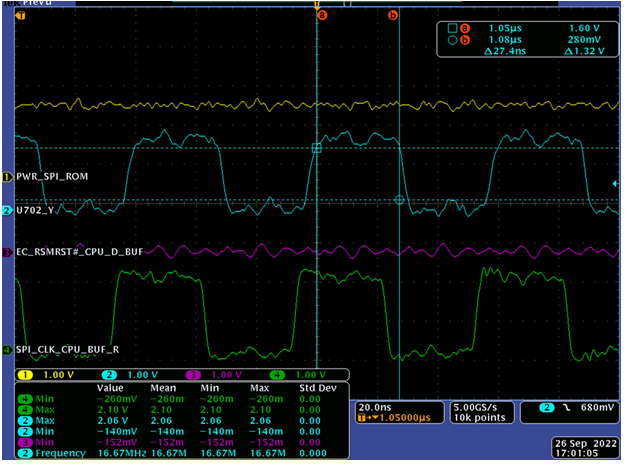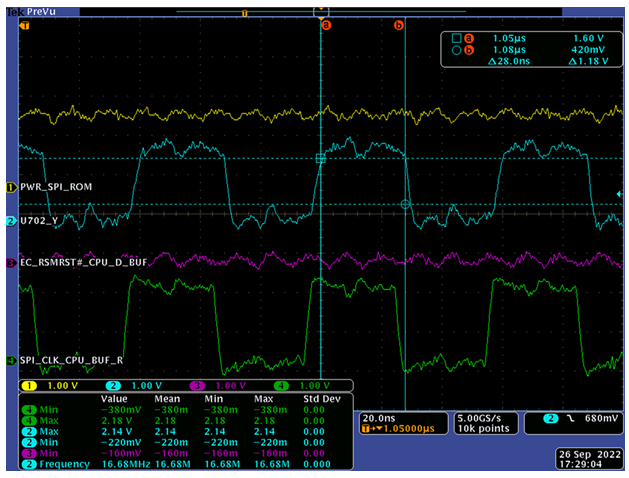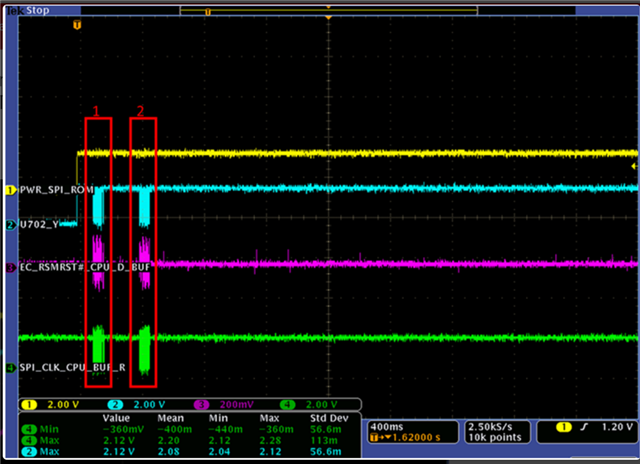Other Parts Discussed in Thread: SN74AUC1G125,
Hi team,
my customer found there's no clock signal when used our buffer,
please noted that R735 is DY (the one below).
all signal level is 1.8V .
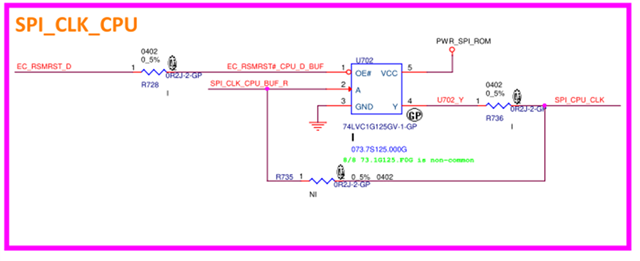
as you can see the blue and green are input and output , and they don't behave like a clock signal,
and they said the input signal is behaving normal without our buffer, also Nexperia p2p 74LVC1G125 doesn't have this problem.
please help check, thanks
